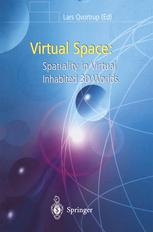

Most ebook files are in PDF format, so you can easily read them using various software such as Foxit Reader or directly on the Google Chrome browser.
Some ebook files are released by publishers in other formats such as .awz, .mobi, .epub, .fb2, etc. You may need to install specific software to read these formats on mobile/PC, such as Calibre.
Please read the tutorial at this link: https://ebookbell.com/faq
We offer FREE conversion to the popular formats you request; however, this may take some time. Therefore, right after payment, please email us, and we will try to provide the service as quickly as possible.
For some exceptional file formats or broken links (if any), please refrain from opening any disputes. Instead, email us first, and we will try to assist within a maximum of 6 hours.
EbookBell Team

0.0
0 reviewsContaining the edited research papers resulting from an ambitious, cross-disciplinary research project, this volume examines the spatiality of virtual inhabited 3D worlds - virtual reality and cyberspace. (Three other volumes look at Interaction, Staging and Methodology.) It is about the communication spaces emerging at the Internet and supported by special 3D interfaces. It is also about the virtual spaces created by virtual reality hardware (CAVEs, panoramic screens, head mounted display systems etc.) and software.
Virtual Space: Spatiality in Virtual Inhabited 3D Worlds is interdisciplinary. It deals with philosophical, psychological, communicational, technological and aesthetic aspects of space. While philosophy raises the question concerning the ontology of space - what is space - psychology deals with our perception of space. Communication theory looks at the way in which space supports communication (i.e. that space is a medium for communication), and finally aesthetic analyses exemplify the use of virtual space in virtual cities, in museums and in art.